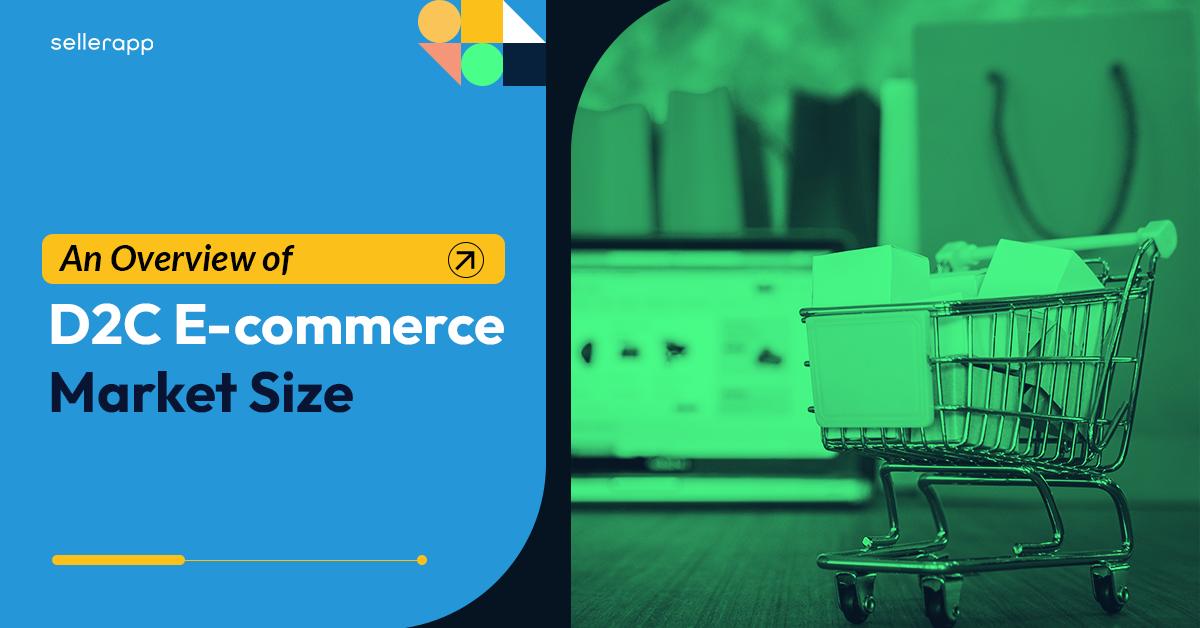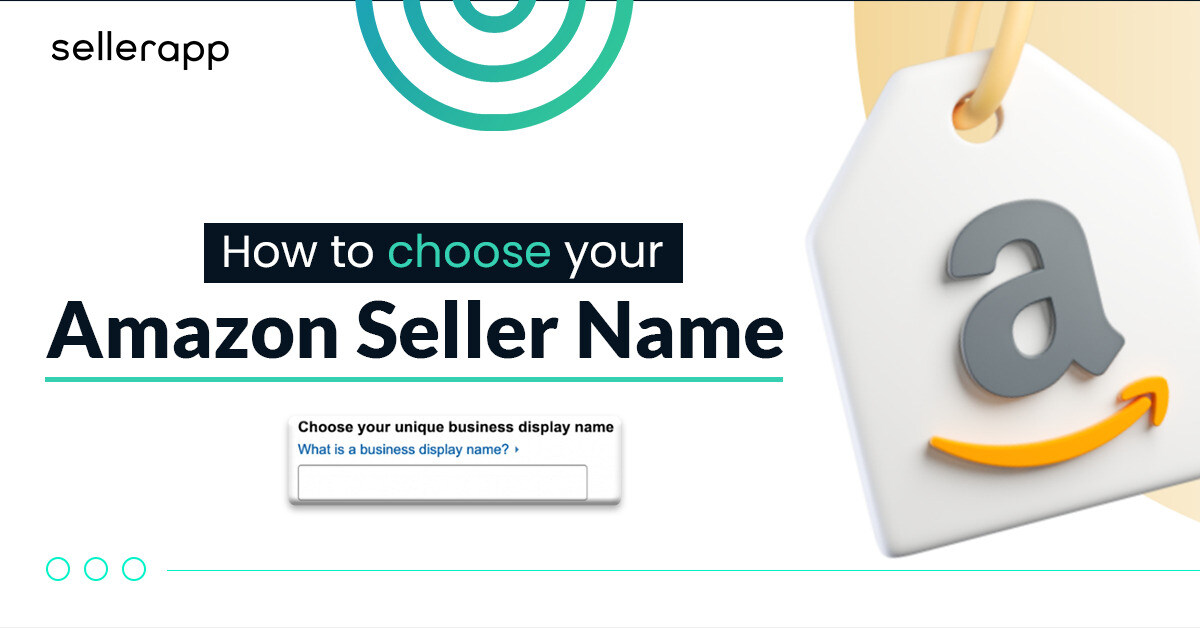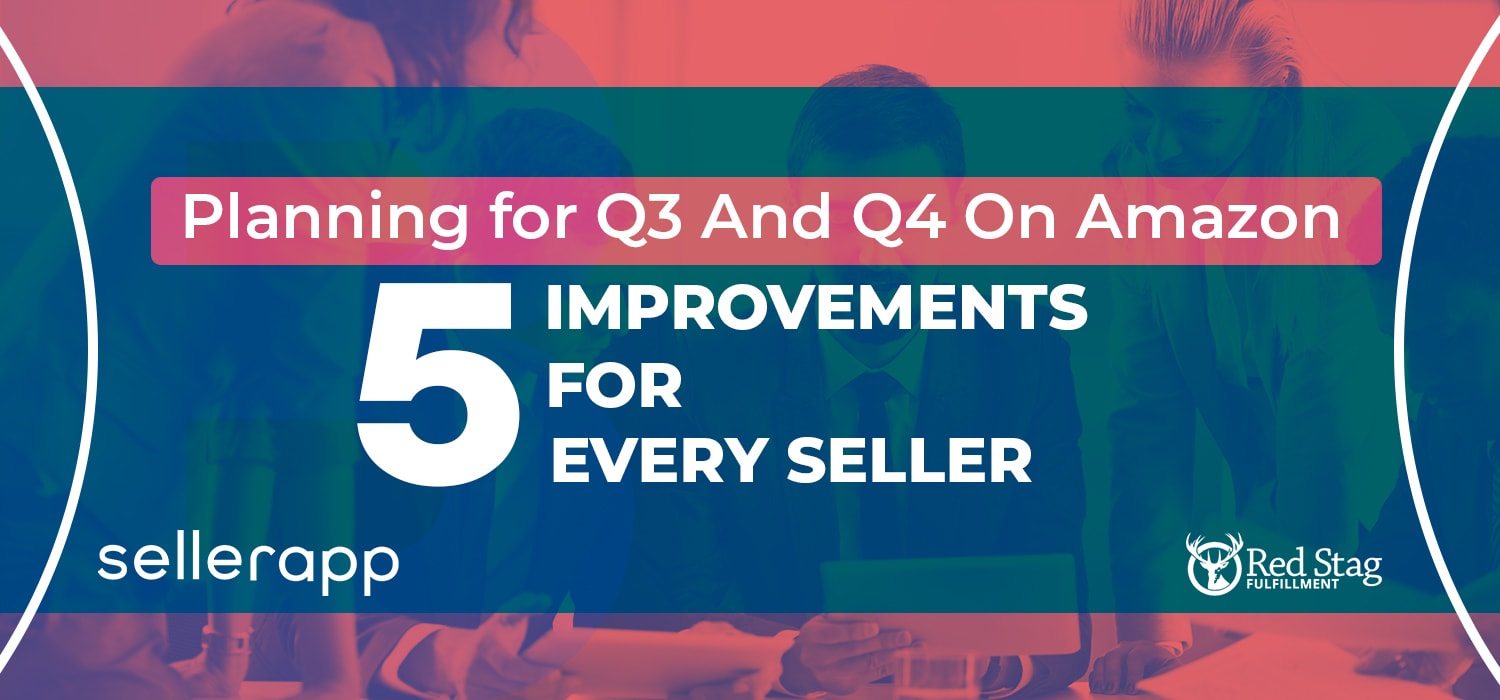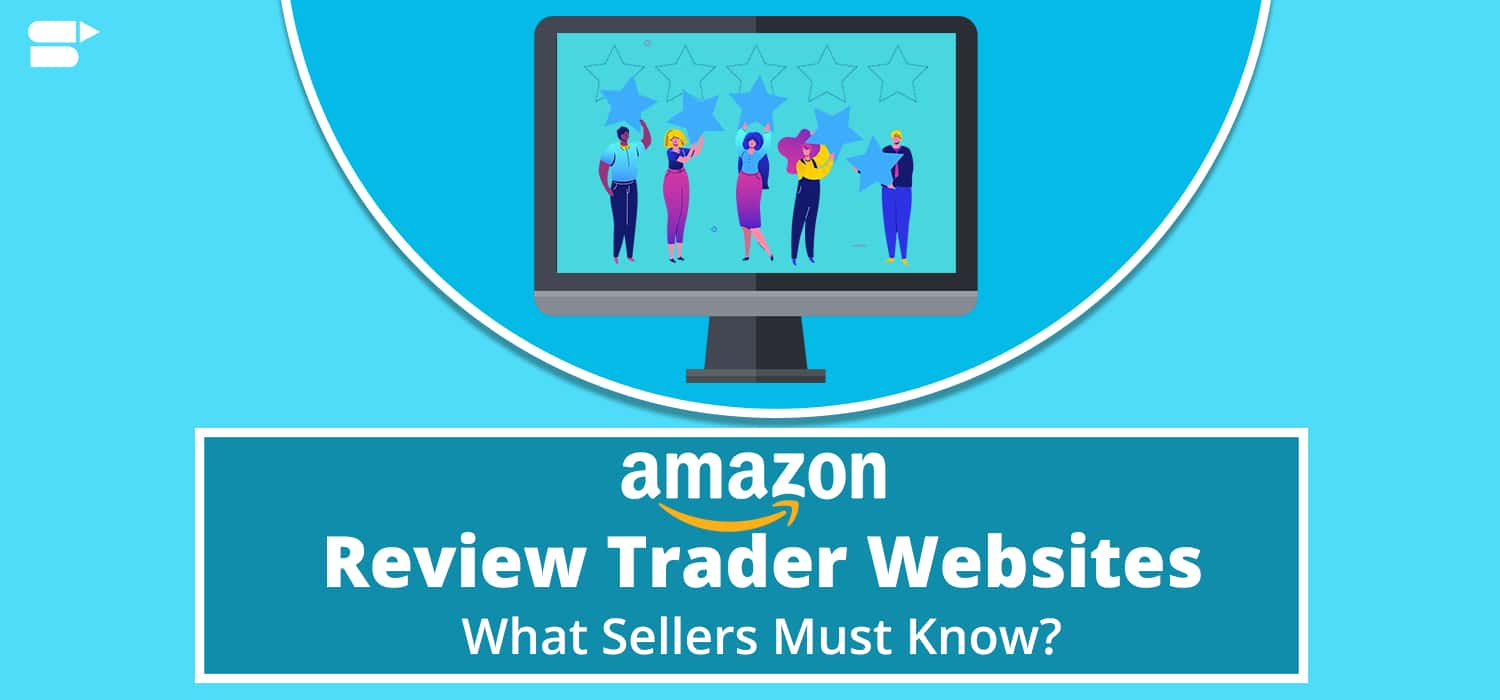Introduction to D2C E-commerce Market Size in India

Did you know that the Direct-to-Consumer (D2C) e-commerce market in India is all set to experience impressive growth?
The Mordor Intelligence expects to see a CAGR of 34.5% rise from 2022 to 2027.
This essentially means that there will be immense opportunity in the e-commerce space in India and taking a slice of the growing market can lead to significant wealth generation.
One of the primary reasons behind this exceptional growth can be attributed to people pivoting to online shopping as a result of affordable internet access, smartphone adoption, and changing categories of consumers.
The D2C e-commerce industry is gaining momentum in the matter of the changing shopping charts in India.
So, let’s dig deeper to understand the driving forces, market dynamics, and growth trends that are shaping the world of D2C e-commerce in India.
Quick Guide
- Overview of the D2C Model?
- A Deep Dive into India’s D2C E-commerce Market Size
- The Massive Opportunity in India’s D2C Market
- Strategies for Succeeding in the D2C Space
- Pros and Cons of Implementing a D2C Strategy
- Examples of successful D2C businesses in India
- Conclusion
Overview of the D2C Model
Direct-to-consumer is a business approach where a company makes and sells its products directly through its own channels. These channels can include online stores, social media, community platforms, and even physical retail stores.
Let’s take a look at Bella Vita Organic founded in 2012 as an example. They create their own handcrafted and unadulterated skincare products. They sell these products both online and in their store. They’ve found that offering special products that are cruelty-free, non-toxic, paraben-free, and certified Ayurvedic.
Then it is a great way to engage with customers because these days people like chemical-free products. They even market their products on social media like Instagram, Facebook, etc. Capitalizing on social media marketing in addition to other channels resulted in this D2C brand generating close to 100 Crores in ARR in just 3 years after they launched their business.
Similarly, In the fashion world, Prabhkiran Singh and Siddharth Munot have also embraced the D2C model with their Bewakoof store. They sell a variety of apparel, stationery, and shoes which are now sold online but they have plans to open up retail stores also. There are a variety of apparel and accessories available from this D2C brand that collaborate with Marvel, Disney, DC, and Looney Tunes.
These examples show the main idea behind D2C which is cutting out the middlemen, like resellers and distributors, to create a direct connection with customers.
This approach helps build a stronger relationship between the brand and its target audience, leading to more loyalty and customer satisfaction.
While the D2C model might not be as well-known as traditional B2B or B2C models, there are plenty of brands out there that are successfully embracing its principles.
Later on, we’ll explore more examples of brands that align with the D2C way of doing things.
Additional source: A Look at the Challenges DTC Brands are Confronting Today
A Deep Dive into India’s D2C E-commerce Market Size
As mentioned in the introduction, the D2C e-commerce market in India is expected to grow substantially, with a CAGR of 34.5% expected growth from 2022 to 2027.
In addition to people (Millennials Mostly) generally switching to online shopping, the COVID-19 pandemic and the consequent lockdowns further boosted this trend and the overall D2C e-commerce market in the country. In fact, both sellers’ and new consumers’ attraction to digital channels continues to grow.
Such a direct connection between customers and brands encourages brand loyalty, helps businesses understand their consumers, and refine their marketing, leading to repeated purchases.
So much so that KPMG research has found that the D2C market in India is expected to surpass $160 billion by 2027.
Interestingly, the D2C fashion segment is expected to grow to $43.2 billion by 2025.
Ultimately, India’s D2C market is home to over 190 million digital shoppers, making it one of the world’s largest online shopping bases. It has been predicted that factors such as rising consumer expenditure together with the penetration of e-commerce will be the major drivers of the D2C market in India in the future.
In fact, brands such as Mamaearth, CaratLane, and Nua, have used the D2C model and have achieved significant revenue milestones.
The Massive Opportunity in India’s D2C Market
According to the data gathered from Kantar, the Indian e-commerce market is anticipated to grow at a CAGR of 19% within the years 2022–2030, compared to the D2C share of the Indian e-commerce market which is approximated to be 49% for the years 2022–2030.
The D2C landscape has fully embraced omnichannel strategies, and 2024 is expected to be a period of substantial growth for the industry, with a key emphasis on value-added services.
For example, the ‘Make in India’ initiative will play a crucial role in the consumer technology sector, fostering local manufacturing and contributing to the industry’s overall expansion. Manufacturers that go D2C online have the added benefit of being able to control every part of the operation, from packaging to advertising.
An example of how the D2C model works effectively can be seen by The Good Glamm Group which registered impressive user engagement metrics, demonstrating the growing success of the D2C approach.
For many startups the D2C model allows them to establish direct contact with consumers bypassing all the inefficiencies of traditional supply chains and placing the products right in front of the customers. They also use lead generation outsourcing to call centers to efficiently reach potential customers and boost sales.
Brands such as Mamaearth which became unicorns, valued at over USD 1 billion, had successfully built loyalty among consumers through direct sales channels.
However, D2C online platforms, especially startups face a lot of issues in the area of supply chain visibility. Alongside this, a growing number of customers expect transparency in their orders, hence the DTC brands need to have effective delivery tracking systems so that consumers can be satisfied and trust the business.
Additionally, Quick commerce (QC) is shaking things up in the D2C space, turning what used to be a waiting game into a sprint to delight customers. It’s all about getting products to doorsteps faster than ever, making shoppers happy and keeping them coming back for more. By embracing quick commerce, D2C brands can tighten up their operations, keep inventory on point, and deliver the kind of experience that today’s time-crunched customers. Ultimately, growing at an unprecedented pace.
Thus, the Indian D2C market presents a massive opportunity in 2024, with significant growth potential and a favorable environment for brands to thrive. By focusing on customer experience, using data analytics, and finding strategic partnerships, D2C brands can capitalize on this opportunity and establish a strong presence in the Indian e-commerce landscape.
Read more: 10 DTC Trends For Ecommerce Growth
Strategies for Succeeding in the D2C Space
To succeed in D2C, brands need to implement a range of strategies that focus on market research, personalization, social media, SEO, content, and an omnichannel approach. These strategies are essential for brands to thrive and grow in the competitive D2C market.
Here are some key strategies for succeeding in the D2C space:
1.Market Research and Personalization
The foundation of a successful D2C brand is to fully understand the market by researching to clarify the target audience as well as their needs. Through personalization of customers’ experiences and providing customized solutions, brands can form robust relationships with their clients and achieve desired outcomes.
The D2C Indian brand Wakefit does diverse types of market research to learn about the sleeping requirements of Indian consumers. They provide consumers with personalized mattresses and sleep solutions, taking into account the needs and preferences of each individual, enabling customers to have better sleep.
2.Social Media Engagement
Social media remains one of the most important ways to target more customers and brand awareness. Social media platforms, including Facebook, Instagram, TikTok, Pinterest, and YouTube, can be used for DTC brands to interact with customers, expand engagement, and also create brand loyalty by including the influencers and users in the content creation processes.
Nykaa, an Indian beauty and skincare D2C brand, has established an affair with social media platforms, especially on Instagram and YouTube, where the brand achieves a lot of visibility. They make use of influencer relations as well as user-generated content to maintain a connection with their audience, showcasing their products and building brand loyalty.
Also read: Beauty Products on Amazon: Discover Top Categories and Hidden Gems
3.SEO Optimization
Search Engine Optimization (SEO) is a must for D2C brands to increase the visibility of their online presence and attract an organic flow of traffic to their websites. Through SEO, which consists of optimizing content and website architecture for search engines, brands can elevate their online exposure and connect with potential customers.
Mamaearth, an Indian D2C brand with specific expertise in natural and toxin-free baby care products, works on SEO optimization of its websites to ensure higher visibility. They adjust the content of their site for these keywords related to childcare, skincare, and haircare, making sure their products show up first on the search results.
4.Content Marketing
Building great content that people can relate to is essential as D2C brands are designed to engage with customers, and highlight their products, and these brands serve as thought leaders in its industry. Content marketing is the way to go in building the credibility of a brand, pulling in traffic, and increasing conversions.
The Souled Store, an Indian D2C brand specializing in pop culture merchandise, excels in content marketing through their blogs and social media channels. They produce high-quality content related to the top shows and cinema, which fans follow and check on their website.
5. Omnichannel Approach
Adapting an omnichannel approach helps D2C brands offer customers a hassle-free shopping experience in virtual platforms such as web portals, mobile applications, and social media as well as physical stores. Brands that have all touchpoints integrated can increase the degree of customer engagement and loyalty.
Zivame, the D2C lingerie brand, from India, uses the omnichannel approach by merging its online platforms with physical stores. Prospective customers can peruse their lingerie collection via the Zivame website or their mobile app and they can also visit the actual stores for fittings and in-store experiences.
By implementing these strategies effectively, D2C brands can position themselves for success in the competitive e-commerce landscape, drive growth, and create lasting relationships with their customers.
Pros and Cons of Implementing a D2C Strategy
The D2C method of marketing involves several positives but it has weaknesses also. Let’s explore the pros and cons.
Pros of implementing a D2C strategy are:
1.Control Over Customer Experience
D2C companies have the advantage of controlling the customer journey from the first contact with the brand to after-purchase interactions. Due to this, brands can convey the same message, offer personalized experiences, and increase customer satisfaction.
Lenskart is an eyewear company that provides its customers with a great online experience by putting up the option of virtually trying glasses on the company’s website. Moreover, they commissioned great customer services like free shipping and easy returns that maintain satisfied customers even when visiting the site.
2.Higher Profit Margin
Since D2C brands cut out the middlemen like wholesalers, retailers and as a result, these companies can manage their manufacturers with higher product prices. The results of this are the industry obtaining bigger profit margins which either goes back into research and development, marketing, or customer service.
Bombay Shaving Company revolutionized the shaving market with a straight sales approach of razors and other grooming kits to consumers with a subscription model. With the absence of intermediary retailers, they offered much higher quality razors at lower prices that could still earn them massive profits.
3.Direct Customer Insights
Selling directly to the customers provides them with valuable data such as purchase behavior that can help the companies in product development, marketing, and business decision-making. Such a data-driven approach helps us to know what consumers like as well as their behavior.
Wakefit, a mattress manufacturing company, gathers crucial consumer data from its “Sleep Internship”. They do this to spot patterns, see what the customers prefer, and enhance their products and marketing approaches so they can continuously improve.
4.Agility and Flexibility
D2C companies are quicker and more tailored to market demands than traditional retail concepts. They are fast to react to trends, bring forth new products, and tweak their price strategies flexibly without getting limited by the traditional avenues of distribution.
Lakme, a skincare and beauty brand, turns to innovations rapidly by constantly introducing new products as consumer tastes change and as customer inputs and market demand are considered. With their agility, they can withstand competition and retain attractiveness to consumers who live a high-speed lifestyle.
Cons of implementing a D2C strategy include:
1.High Initial Costs
Setting up a D2C channel involves a lot of money being pumped into the online infrastructure, technology, marketing, and logistics. That is why this can be a severe competitive disadvantage for smaller, resource-strained companies.
Nykaa is an Indian brand of beauty and cosmetics retailer and they did a lot to develop their end-to-end D2C channel by building their infrastructure, technology, and marketing so that they could be the market leader. Although Nykaa had a lot of success, the higher investment needed to establish its online platform and brand in the early stages was very large.
2.Logistical Challenges
The logistics of order fulfillment, shipping, and returns can be complex and costly, especially for companies in the growth stage. On-time delivery and operational efficiency of logistics services are key attributes for reliable customer service.
Lenskart had to face a couple of logistical issues such as the management of order fulfillment and return as the company started to scale up its operation. The delivery of the prescribed eyewear on time and also handling the fast-rising returns complicated the logistics and customer service, thus considerable amount of money was invested in logistics and customer service infrastructure.
3.Market Reach Limitations
On the one hand, D2C firms can expand their reach and serve a global market through online channels, but on the other hand, their ability to achieve the same depth of market penetration as traditional retailers with a wide distribution network may be significantly limited.
Bewakoof which primarily operates its D2C channel might have difficulty in creating the same market penetration that is inherent to traditional retailers who have widespread offline distribution networks. Despite all that, one of the drawbacks of just focusing on the online market is that it becomes even more difficult to reach remote areas or those who prefer shopping offline.
4.Competition and Brand Differentiation
Due to the rapidly growing D2C brands within different industries, competition between them has become fiercer. Being unique and different in a market that is already filled with competition and brands that all look the same is a difficult task. This is what makes new marketing strategies and exceptional value propositions necessary for turning heads.
Urban Ladder, the Indian home furnishing and decor retailer, is battling competition from local and global rivals within the D2C space. During an already-crowded market and competing with other brands for market share, Urban Ladder needs to constantly innovate in product design, quality, and customer experience, to stay head and shoulders above competitors.
Businesses should, therefore, assess the pros and cons of D2C and analyze it to come up with a solution that will best fit their particular situations.
Examples of successful D2C businesses in India
Successful D2C businesses in India have leveraged the direct-to-consumer model to establish a strong brand presence, engage with customers directly, and drive growth. Here are examples of successful D2C businesses in India:
1.Mamaearth (Honasa Consumer Private Limited)
Mamaearth has been able to become a D2C brand as it has concentrated on offering safe, chemical-free personal care and baby care products and this demand is increasing day by day which is why people prefer environment-friendly options.
The brand has demonstrated a strategic approach to influencer marketing which has been one of the key factors for its prosperity.
By working with influencers who connect to the brand’s core audience, Mamaearth has gained credibility and trust among consumers.
Take for example, when Mamaearth gained the sale and exposure of the product after it collaborated with popular family influencers and mommy bloggers. As per the report, it experienced revenue growth of 500% in just one year, attributed in part to its influencer marketing initiatives.
2.BoAt Lifestyle (Imagine Marketing Services Pvt. Ltd.)
BoAt Lifestyle is a leading D2C brand in India’s audio gadgets market selling premium level products at lower prices.
The brand’s success is owed to influencer marketing techniques which help to develop brand credibility and awareness for the brand.
By teaming up with celebrities like Jacqueline Fernandes, Kartik Aryan, and Kiara Advani, as well as content creators like Prajakta Koli, Harsh Beniwal, and Bhuvan Bam, they were able to successfully communicate and engage their core customers.
It has been claimed that BoAt Lifestyle experienced a significant increase in sales, with an approximately Rs 4000 crore growth in FY 22 – 23.
3.Licious (Delightful Gourmet Pvt Ltd.)
Licious disrupted the meat and seafood industry of India by providing processed meat and seafood that is of high quality, hygienically packed, and directly sent to the consumers.
The brand’s ability to drive the D2C business is due to its creative marketing strategies and determination to provide the best product quality and customer service.
As a part of its growth strategy, Licious built a customer-centric platform. The app is so engaging that customers avail of its services repeatedly.
The brand used its marketing skills to establish trust and brand recognition among customers, especially in large towns where fresh, high-quality meat isn’t always available. A campaign film was launched for the brand’s drool-inducing offering. The movie depicts a regular Sunday in a Chennai household that turns into a blockbuster Sunday with the mouthwatering mutton dishes that are prepared at home.
Together with famous food influencers and chefs, Licious could tell about its freshness and superior quality of products that caused sales and retention to rise significantly. It is illustrated that Licious experienced over Rs 748 crore revenue growth in 2023.
4.Melorra
Melorra established a unique identity in the Indian jewelry space by bringing in a trendy, lightweight design that is inspired by fashion trends from across the world.
One of the reasons why the brand is thriving as a D2C business is its customer-oriented value and digital-oriented approach. The brand divided its products into three, work, party, and casual. This allows them to get closer to and interact with their intended customers who mainly consist of millennials and Gen Z consumers.
As of 2023’s report, Melorra holds 14.41% at a net worth of INR 360Cr. Through fashion celebrities’ partnerships, Melorra proved its uniqueness and gathered the support of a loyal audience.
5.Wakefit Innovations Pvt. Ltd.
Wakefit single-handedly conquered the Indian mattress industry by uniquely producing it with consumer-directed methods. In 2023, the company recorded a revenue of Rs 825 crore and aims to cross the Rs 1000 crore mark by 2024.
The marketing strategy’s success can be often linked to customer information and interaction. The campaign “Sleep Internship” of Wakefit got into the spotlight; the people on social media platforms praised the campaign, showing that they support the company’s efforts to promote healthy sleeping habits.
Wakefit carried out its marketing strategy and collaborated with users to get their word out there thus communicating its value proposition and differentiating itself from established brands.
Conclusion
With the D2C Indian e-commerce marketplace, brands will have to respond, be innovative, and provide excellent personalization to survive in this dynamic setting.
The future contains both challenges and opportunities and therefore D2C brands must be able to stay flexible, data-driven as well as customer-oriented to go through the changing market demands and take full advantage of this emerging market.
Moreover, it’s important to note that the majority of the successful D2C brands are also taking advantage of Indian marketplaces like Flipkart and Third-Party APIs such as Flipkart Product API to help them gain a competitive intelligence on the platform.











Eric Allen
July 7, 2024I like this blog!! It’s a masterpiece for Amazon sellers!!
Clare Thomas
July 31, 2024Glad you like it!
Helen Evans
July 9, 2024very informatic and good content.
Clare Thomas
July 31, 2024Thank you.